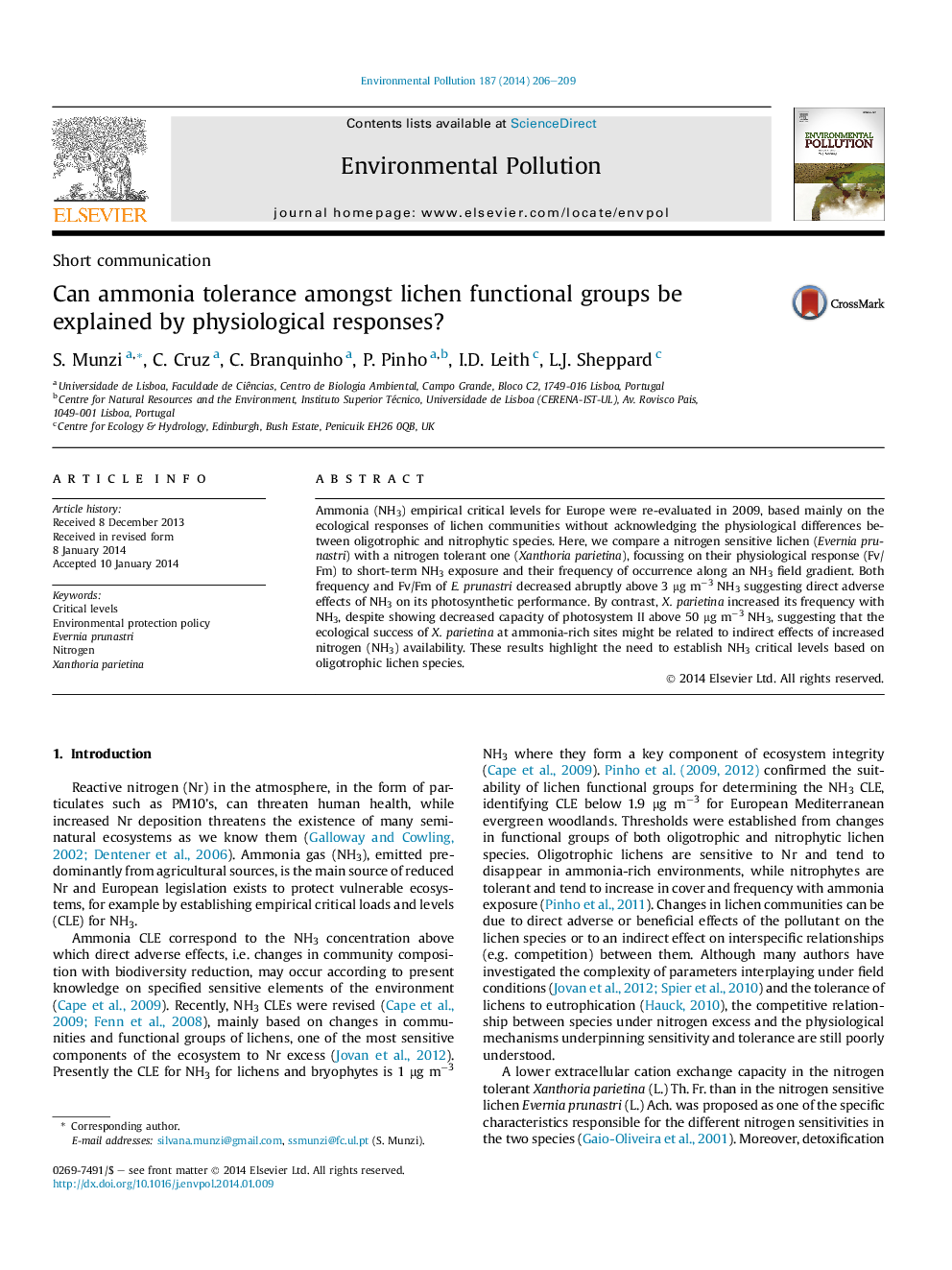| Article ID | Journal | Published Year | Pages | File Type |
|---|---|---|---|---|
| 6318334 | Environmental Pollution | 2014 | 4 Pages |
Abstract
Ammonia (NH3) empirical critical levels for Europe were re-evaluated in 2009, based mainly on the ecological responses of lichen communities without acknowledging the physiological differences between oligotrophic and nitrophytic species. Here, we compare a nitrogen sensitive lichen (Evernia prunastri) with a nitrogen tolerant one (Xanthoria parietina), focussing on their physiological response (Fv/Fm) to short-term NH3 exposure and their frequency of occurrence along an NH3 field gradient. Both frequency and Fv/Fm of E. prunastri decreased abruptly above 3 μg mâ3 NH3 suggesting direct adverse effects of NH3 on its photosynthetic performance. By contrast, X. parietina increased its frequency with NH3, despite showing decreased capacity of photosystem II above 50 μg mâ3 NH3, suggesting that the ecological success of X. parietina at ammonia-rich sites might be related to indirect effects of increased nitrogen (NH3) availability. These results highlight the need to establish NH3 critical levels based on oligotrophic lichen species.
Related Topics
Life Sciences
Environmental Science
Environmental Chemistry
Authors
S. Munzi, C. Cruz, C. Branquinho, P. Pinho, I.D. Leith, L.J. Sheppard,
